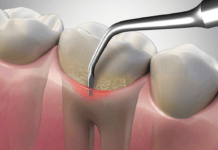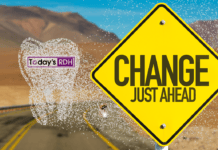The 574 Native American and Alaska Native tribes in the United States own 325 reservations and trust lands.1 Seven of them exist within my home state of Montana,2 and 6.7% of Montana’s population consists of Native Americans or Alaska Natives, which equates to roughly 71,608 native civilians.3
Although Natives make up a small portion of the population in the United States (only 1%), they are more prone to disease and illness than any other ethnic or racial group. For example, Native populations have the highest prevalence of tobacco use, they are more prone to diabetes, and they have the poorest oral health.4-6
Where Do We Come In?
Oral health is where we come in. Native children have four times more cases of untreated caries than Caucasian children. A 2015 report from the PEW Charitable Trusts cited statistics that 68% of adult Natives ages 35 to 44 had decay, and 43% of these individuals also had periodontal disease.6
These health issues are not only socio-economic but also are direct results of rural isolation. There are fewer dental professionals available and willing to practice in rural areas. Leaving the reservation for health care can prove difficult in a state like Montana, where driving to the nearest Medicaid, in-network provider, or community health center might require 300 miles roundtrip.
In 2014, over 2.4 million Natives lived in rural areas.6 To put this number in perspective, 2.6 million Native Americans and Alaska Natives live in the United States, which means 92% of the population is living in rural communities.4
What Defines “Rural” Communities?
Montana is the fourth largest state in the United States and has a population of just over one million residents − 1,068,778 in 2019, to be exact.3 A rural community is defined as a community with a population under 50,000 residents; any community over that number is deemed urban.7 Our gigantic, “Big Sky State” of Montana only has three communities that qualify for the urban distinction, but our fourth-largest town, Bozeman, is predicted to pass the mark in this year’s census.8
Another socio-economic factor to keep in mind when considering Native populations is the poverty level of rural America. When looking at the United States’ poverty charts, I am not surprised to see on a map of Montana that the three highest areas of rural poverty are reservation areas.9 Keep in mind that the lack of socio-economic structure leading to high paying jobs, higher education opportunities, and access to quality healthcare are all interwoven in this web of rural challenges.
How Can We Make a Difference?
If you are interested in making a difference, and you want the opportunity to experience a slower-paced lifestyle, a career in Indian Health Services (IHS) might be worth considering. I have known many individuals who have had professional dental careers within IHS.
Although IHS hygienists may not receive the same pay as hygienists in private practice, they experience other benefits that make the job fulfilling and rewarding. For example, many hygienists are traveling to rural areas to conduct sealant and fluoride programs, which creates an opportunity to observe the beautiful views of the countryside while saving the clinician’s posture from the grueling day-to-day ergonomics of clinical dental work.
Who doesn’t enjoy a night of restful sleep with no backache after a day of gorgeous scenery and warm sunshine?
Other friends have shared their enjoyment of the culture they were immersed in while working for IHS. Each tribe has its own traditions, beliefs, and legends. Did you know many tribal societies are matriarchal, putting more importance upon women as leaders rather than men? Did you know that the rhythm of the drums played in unison during a drum circle represents the heartbeat of Mother Earth?10
In Montana, it is still commonplace for all to enjoy powwows. The tribal people wear an ancestral dress, dance, and play drums. The children play traditional games, and the elders share legends about their people. Onlookers can join in or quietly watch, enjoying a warm piece of fry bread.
I had the opportunity to speak with a wonderful woman and dental hygienist, Juanita Simpson, LCDR, USPHS, about her experience working for IHS. Juanita provided 23 years of dental service to IHS as a member of the United States Public Health Service (USPHS). Juanita shared with me that the greatest hurdle of working for IHS is facing socioeconomic disparities within the patient population.
She enjoyed the opportunity to “wear a lot of hats” during her career and ran a sealant program in three schools for three to four months each year. Juanita says that her time was “A wonderful experience with a lot of variety.”
How to Move Forward
There are a few routes clinicians can take to pursue a successful career within IHS. You can either enter through Civil Service, contract with IHS, or through the United States Public Health Service. There are perks to each path that individuals need to fully understand, depending on their own personal and financial needs as well as career goals.
Some of these paths provide opportunities for student loan forgiveness or student loan repayment, depending on your contract terms. These careers often offer benefits, including health care and retirement plans. For example, if you join the USPHS Commissioned Corps, you could retire after only 20 years of service.
More information can be found through links provided on the Tribal Health section of the Centers for Disease Control and Prevention website. The links on this site lead directly to Civil Service, IHS, and USPHS pages so that you may explore all three career options to see which would fit your goals and personal needs best. Lists of benefits and terms are included on these pages. The CDC site also provides tribal information such as job postings, current epidemiology, geography, and more.
Imagine living among the thousands of lakes in Minnesota or near the Black Hills of South Dakota, where the mining and outlaw history create visions of the Wild West. Imagine exploring northern Washington and the wineries and fruit stands of the Cascade Mountains. Imagine living near the Painted Desert and exploring gigantic, warm sandstone canyons on your weekends off.
Now imagine experiencing all of these things while making a difference. Imagine giving a nine-year-old boy his first toothbrush. Consider all of these things when you consider your future and your career. IHS might fit in your vision for your future.
Now Listen to the Today’s RDH Dental Hygiene Podcast Below:
References
- Public Health Professionals Gateway: Tribal Health. Center for Disease Control and Prevention. 2020, Jun 12. Retrieved from https://www.cdc.gov/tribal/index.html.
- Introduction to the Montana Tribal Nations. Montana State University. Retrieved from http://www.montana.edu/iefa/introductiontomttribalnations/index.html.
- Quick Facts: Montana. United Census Bureau. 2019. Retrieved from https://www.census.gov/quickfacts/fact/table/MT/PST045219.
- American Indians/Alaska Natives and Tobacco Use. Center for Disease Control and Prevention. 2019, Nov 25. Retrieved from https://www.cdc.gov/tobacco/disparities/american-indians/index.htm.
- Dubois, W. Native Americans with Diabetes: Who’s the Enemy? 2019, Oct 14. Retrieved from https://www.healthline.com/diabetesmine/native-americans-diabetes-no-enemy#1.
- The Oral Health Crisis among Native Americans. The PEW Charitable Trusts. 2015, Jul 23. Retrieved from https://www.pewtrusts.org/en/research-and-analysis/fact-sheets/2015/06/the-oral-health-crisis-among-native-americans.
- Defining Rural Population. Health Resources and Services Administration. 2020. Retrieved from https://www.hrsa.gov/rural-health/about-us/definition/index.html.
- World Population Review. 2020. Retrieved from https://worldpopulationreview.com/states/cities/montana.
- Rural Poverty and Well-being. Economic Research Service, United States Department of Agriculture. 2020 Feb, 12. Retrieved from https://www.ers.usda.gov/topics/rural-economy-population/rural-poverty-well-being/
- Alvarez, K.S. Native Americans Share the Meaning Behind Their Most Important Traditions and Beliefs. 2019, Oct 30. Retrieved from https://www.rd.com/list/native-american-traditions-and-beliefs/.












